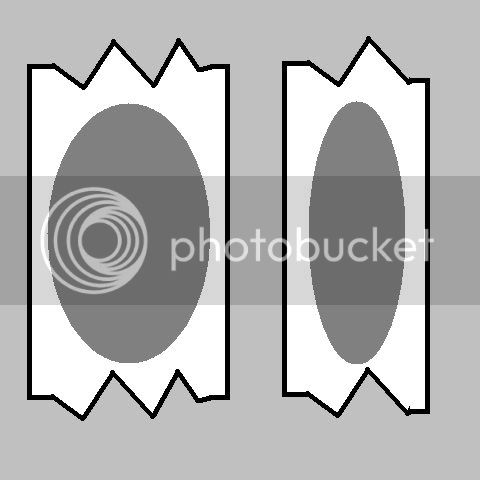Hi ya'll,
I was at Performance Bike a few days ago and saw these 1.25" MTB slicks on clearance for 8 dollars each.
I'm riding a Trek 4300D with the stock knobbies right now with a Crystalyte 408 rear hub. The Crystalyte kit came with a topeak bag & rack combo that holds 4 (12v10ah) SLA batteries). I think each battery is about 7 lbs. Funny, I didnt think 28lbs was that much weight till I put the bag on the rear rack.... boy was I wrong. So 28lbs, weight of the motor, controller, and all that other junk makes the back end heavy. I'm 5'10 @ 175lbs, also.
My question is,... what are the benefits and drawbacks of putting these new slicks on?
My trek is an aluminum hardtail,.... am I gonna dent a rim, or worse by mounting these? The rear wheel looks pretty darn tough with the fat rim and spokes.. but i dunno, that's still a lot of weight. I ride mostly on the street, but i'll occasionally switch onto the sidewalks and vice versa. Even with my stock tires,... i was hesitant do push any sort of real speed on sidewalk type surfaces (bumps, indents, etc.). The slicks were 8 bucks each, should i gamble?
Some guy at some other bike shop said that the additional protection a 2 inch tire would provide my wheel vs a 1.25 would be marginal, at best. Is that true?
Appreciate any advice u could give me.
Paul
I was at Performance Bike a few days ago and saw these 1.25" MTB slicks on clearance for 8 dollars each.
I'm riding a Trek 4300D with the stock knobbies right now with a Crystalyte 408 rear hub. The Crystalyte kit came with a topeak bag & rack combo that holds 4 (12v10ah) SLA batteries). I think each battery is about 7 lbs. Funny, I didnt think 28lbs was that much weight till I put the bag on the rear rack.... boy was I wrong. So 28lbs, weight of the motor, controller, and all that other junk makes the back end heavy. I'm 5'10 @ 175lbs, also.
My question is,... what are the benefits and drawbacks of putting these new slicks on?
My trek is an aluminum hardtail,.... am I gonna dent a rim, or worse by mounting these? The rear wheel looks pretty darn tough with the fat rim and spokes.. but i dunno, that's still a lot of weight. I ride mostly on the street, but i'll occasionally switch onto the sidewalks and vice versa. Even with my stock tires,... i was hesitant do push any sort of real speed on sidewalk type surfaces (bumps, indents, etc.). The slicks were 8 bucks each, should i gamble?
Some guy at some other bike shop said that the additional protection a 2 inch tire would provide my wheel vs a 1.25 would be marginal, at best. Is that true?
Appreciate any advice u could give me.
Paul


